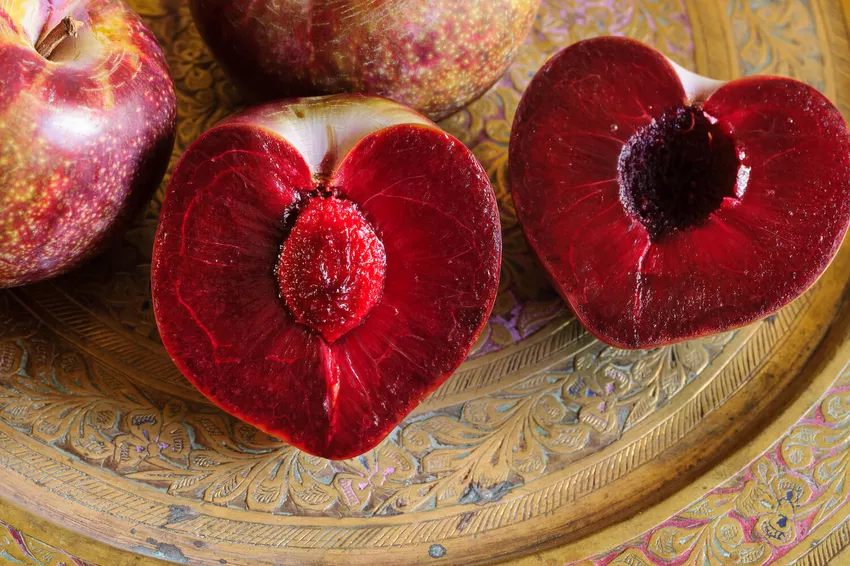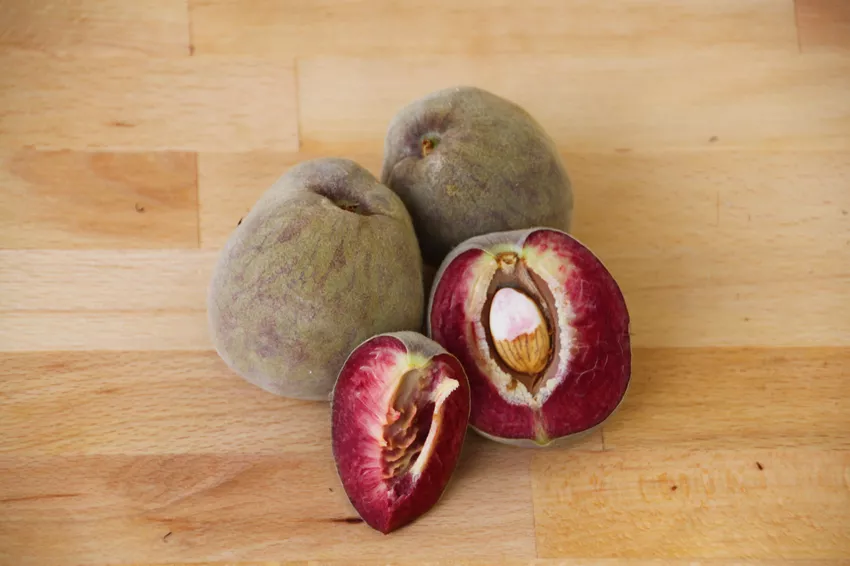Red fruits look delicious. But besides strawberries and cherries, there is a lot more. We show six types and varieties of fruit with red flesh.

The eye eats with you, as the saying goes. And a nice piece of fruit tastes twice as good. Red-fleshed fruit not only offers variety for the eye and a wonderful taste, but is also particularly rich in anthocyanins. These plant pigments, which color the fruit so intensely, have an antioxidant effect and bind free radicals in the body that are caused by stress.
Below we share with you our favorite red-fleshed fruits and varieties, which are a real eye-catcher in your garden as well as on the plate.
1. Blood Apple Maggy®
Anyone who thinks that an apple can only take on different colors from the outside is very wrong. Because the so-called blood apple (Malus × purpurea) impresses with a reddish colored flesh. The variety, sometimes also referred to as the purple apple, was created by crossing. But the blood apple doesn't just score with its special pulp: Its pink blossom is magical and a real bee magnet in your own garden.

The red vineyard peach (syn. blood peach, Sanguinella) (Prunus persica) is less sweet than other types of peach, but all the more aromatic. In the past, the variety often grew in vineyards between the vines and its fruits served the vintners as a small refreshment for in between. Today there are initiatives in Austria and also on the Moselle to revive the red vineyard peach. Incidentally, the variety can be grown directly from the seed - grafting is not absolutely necessary.

3. Blood Pear
A speci alty among the pears (Pyrus communis) is the blood pear. Their flesh is sweet and excellent for compote orSuitable for dried fruit - but of course also for snacking directly from the tree. The old pear variety was first mentioned in Germany in 1684 and due to its undemanding nature it also grows in meadow orchards.

Nothing beats a red gooseberry (Ribes uva-crispa) while walking through the garden. Its slightly sour, refreshing taste is also wonderful in cakes and its red color makes it an eye-catcher on the table. The gooseberry is a close relative of the currant and grows like a shrub in the same way. Fortunately, you no longer need to be afraid of the prickles, because there are now also prickly varieties.

5. Suregio (syn. plum cherry)
Suregio is a naturally occurring hybrid between cherry plum and cherry (Prunus cerasifera x P. avium), which is why it is also known as plum cherry. This very special hybrid species is extremely old and occurs mainly in the Mediterranean area. The spherical fruits of the Suregio are colored in a deep dark red and taste slightly sour. The special plum cherry can also find a place in your garden. Sources of supply are still quite rare in this country, but you will find what you are looking for on the part of Italian fruit tree dealers.

Pluot Flavor Supreme® ((Prunus salicina x P. armeniaca) x P. salicina) is an interspecific hybrid of Japanese plum and apricot. The trees of this rarity usually do not grow more than 3 meters high and bear plenty of fruit. From the outside, these don't seem all that special, but the big element of surprise follows when you bite into the Pluot Flavor Supreme®: Then you see the flesh, which shines in rich red and not only looks great, but also tastes very sweet. This makes the Pluot Flavor Supreme® an ideal snack for children.

If you're interested in weird fruit, be sure to check out our article on “5 Fruits You've Surely Haven't Heard Of”